Pork butt is a versatile cut of meat that can be used to create juicy and flavorful dishes. With the right recipes and tips, you can achieve tender and succulent results every time you cook pork butt. In this article, we will explore various recipes and offer expert tips to help you make the perfect pork butt.
Key Takeaways:
- Learn how to cook pork butt to achieve juicy and flavorful results.
- Discover different recipes and expert tips to enhance your pork butt dishes.
- Understand the difference between pork butt and other cuts of meat.
- Explore traditional roasting methods and smoking techniques for pork butt.
- Find inspiration for pairing side dishes with roasted or smoked pork butt.
What is a Pork Butt Roast?
Contrary to its name, a pork butt roast is not from the pig’s rear end but actually comes from the thicker part of the shoulder area. It is also known as pork shoulder, Boston butt, or picnic roast. These cuts are popular for pulled pork recipes due to their fat marbling, which makes them perfect for slow roasting. In this article, we will focus on cooking boneless butt roast/shoulder butt roast in a traditional pork roast fashion.
Equipment and Ingredients for Cooking Pork Butt
When it comes to cooking a succulent pork butt roast, having the right equipment and ingredients is essential. Here’s a list of what you’ll need to create a delicious masterpiece:
- A roasting pan with a wire rack or a large casserole/baking dish lined with aluminum foil as a makeshift rack. This will help elevate the pork butt roast and allow for even heating and browning.
- A boneless pork butt roast, weighing around 3-4 lbs, for the best taste and texture.
- A flavorful seasoning rub that includes:
- Brown sugar to add a touch of sweetness and caramelization.
- Paprika for a rich smoky flavor and vibrant color.
- Onion powder and garlic powder to enhance the savory notes.
- Mustard powder for a subtle tang.
- Kosher salt and black pepper to season the meat perfectly.
- A dash of cayenne for those who enjoy a hint of heat.
These carefully selected ingredients will infuse your pork butt roast with incredible flavors, creating a mouthwatering experience for your taste buds.
Now that you have your equipment and ingredients ready, it’s time to move on to the preparation and seasoning of the pork butt. But first, let’s take a look at how it’s done:
Equipment and Ingredients for Cooking Pork Butt
| Equipment | Ingredients |
|---|---|
| Roasting pan with wire rack | Brown sugar |
| Large casserole/baking dish with aluminum foil | Paprika |
| Onion powder | |
| Garlic powder | |
| Mustard powder | |
| Kosher salt | |
| Black pepper | |
| Cayenne | |
| Pork butt roast (boneless, 3-4 lbs) |
Preparation and Seasoning of Pork Butt
Before cooking the pork butt, it is important to properly prepare and season the meat to maximize its flavor and tenderness. Here are the steps you should follow:
- Remove any netting or excess fat on the pork butt to ensure even cooking.
- Rinse the meat under cool water and pat it dry with a paper towel.
- If the pork butt has a thick fat cap, trim some of it away, but leave some for added juiciness and flavor.
- Next, it’s time to apply the seasoning rub. You can use a pre-made rub or create your own using a combination of herbs and spices.
- Generously coat the pork butt with the seasoning rub, making sure to massage it into the meat for maximum flavor penetration.
- For enhanced flavor, it is recommended to refrigerate the seasoned pork butt overnight. This allows the flavors to meld together and infuse into the meat.
By following these steps, you’ll ensure that your pork butt is well-prepared and seasoned, ready to be cooked to perfection.
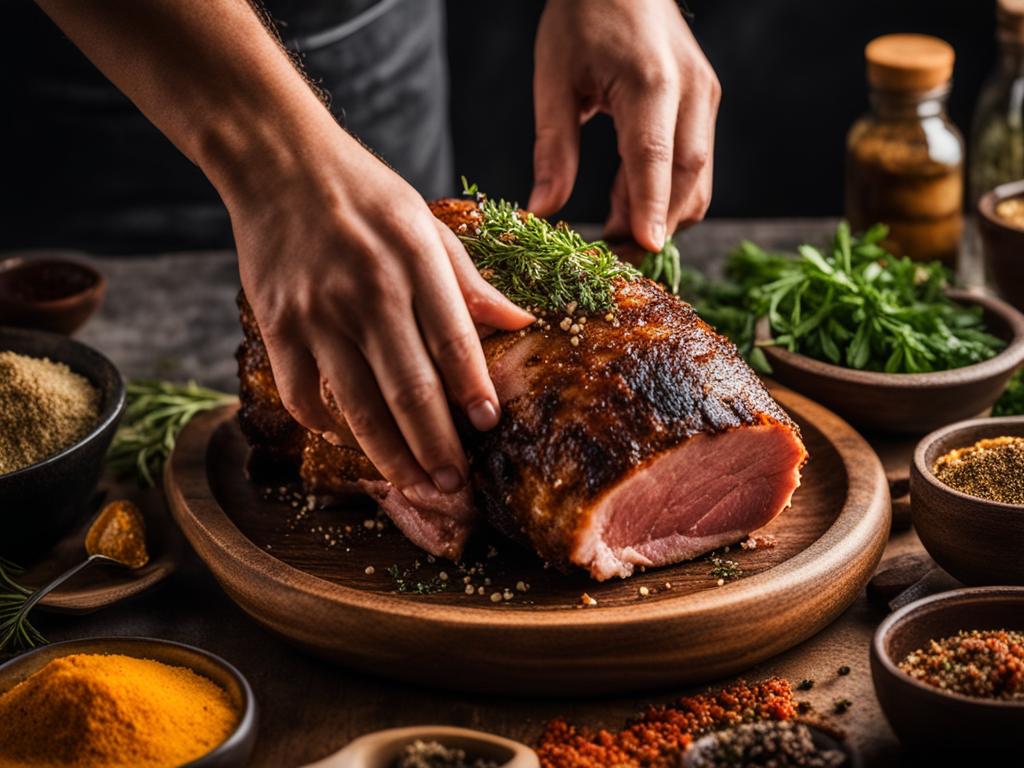
| Seasoning | Quantity |
|---|---|
| Brown sugar | 1/4 cup |
| Paprika | 2 tablespoons |
| Onion powder | 1 tablespoon |
| Garlic powder | 1 tablespoon |
| Mustard powder | 1 tablespoon |
| Kosher salt | 2 tablespoons |
| Black pepper | 1 tablespoon |
| Cayenne | 1 teaspoon |
These common seasonings can be adjusted according to your personal taste preferences. Feel free to experiment with different herbs and spices to create your own unique seasoning blend.
Roasting the Pork Butt
To achieve a tender and flavorful pork roast, proper roasting techniques are essential. Here’s how to roast your seasoned pork butt to perfection:
- Preheat your oven to 350°F (175°C) and place a roasting rack in a roasting pan.
- Position the seasoned pork butt roast on the roasting rack, ensuring that the fat side is facing up if it has one. This placement allows the fat to render and baste the meat, enhancing its juiciness and flavor.
- Insert a meat thermometer into the thickest part of the roast without touching the bone, as it may give an inaccurate reading.
- Place the roasting pan with the pork butt in the preheated oven. The cooking time will vary depending on the size and weight of the roast. Generally, a 3-4 lb roast will take around 3-4 hours to cook.
- During the cooking process, monitor the internal temperature of the roast. The crucial factor for achieving a tender result is the internal temperature, which should reach 185°F (85°C). This temperature ensures that the fat and connective tissues break down, resulting in a juicy and flavorful pork roast.
Here is an example of the roasting temperature and time guidelines:
| Weight of Pork Butt | Estimated Cooking Time |
|---|---|
| 3-4 lbs | 3-4 hours |
| 4-5 lbs | 4-5 hours |
| 5-6 lbs | 5-6 hours |
Keep in mind that these times are approximate, so always rely on the internal temperature to determine doneness.
Key Points:
– Place the seasoned pork butt roast with the fat side up on a roasting rack.
– Cook in a preheated oven at 350°F.
– Monitor the internal temperature and aim for 185°F for a tender result.
Roasting the pork butt at the right temperature and for the appropriate time guarantees a succulent and flavorful roast that will impress your guests.
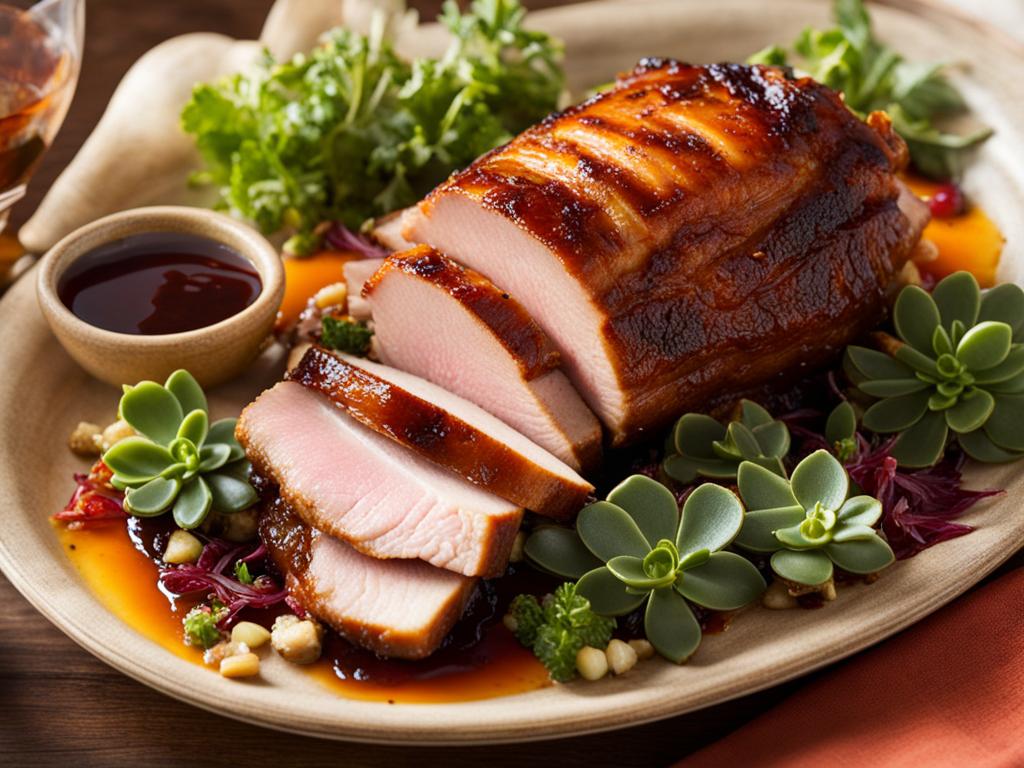
Resting and Slicing the Pork Butt
Once the pork butt reaches an internal temperature of 185°F, it is time to remove it from the oven and let it rest for at least 15 minutes. This resting period is crucial as it allows the natural juices to redistribute throughout the meat, resulting in optimal flavor and tenderness.
After the resting time, transfer the pork butt to a cutting board. Since the meat may be tender, some edges may shred during slicing, but fret not, as this adds to the texture and appeal of the dish.
With a sharp knife, slice the pork butt into ¼” thick slices. Take your time and enjoy the process. The beautifully cooked meat should be easy to cut through.
“Slicing the pork butt into thin slices allows for even distribution of flavors and enhances the eating experience,” advises barbecue expert John Martinez. “You’ll get a satisfying combination of moist and tender meat in every bite.”
While the pork butt is resting, you can collect the pan drippings for an added burst of flavor. Drizzle the drippings over the sliced pork butt or use them as a dipping sauce on the side.
For a classic touch, serve your sliced pork butt with your favorite barbecue sauce. Whether it’s a tangy, smoky, or sweet sauce, the choice is yours. You can also slather the sauce directly onto the meat before serving for an extra layer of flavor.
Enjoy your beautifully prepared pork butt slices, which are sure to be the highlight of any barbecue gathering or family meal.

Pairing Side Dishes with Roasted Pork Butt
Roasted pork butt is a delicious and hearty dish that can be enhanced by pairing it with the perfect side dishes. Here are some classic options that complement the rich flavors of the pork:
- Macaroni and Cheese: The creamy and cheesy macaroni and cheese is a comforting side dish that adds a satisfying contrast to the tender pork butt. Its rich and indulgent flavors create a harmonious balance that will leave you craving for more.
- Coleslaw: For a refreshing and crunchy side dish, coleslaw is an excellent choice. Its cool and crisp texture complements the succulent pork butt, providing a delightful contrast. The tangy dressing adds a burst of flavor that cuts through the richness of the meat.
- Cornbread: Cornbread is a staple side dish that adds a delightful crunch and a slightly sweet flavor to the meal. The soft and crumbly texture of the cornbread pairs perfectly with the tender pork butt, creating a mouthwatering combination that will leave you satisfied.
Feel free to experiment and try other side dish options that suit your taste. The key is to find dishes that enhance the flavors of the roasted pork butt and provide a well-rounded dining experience.
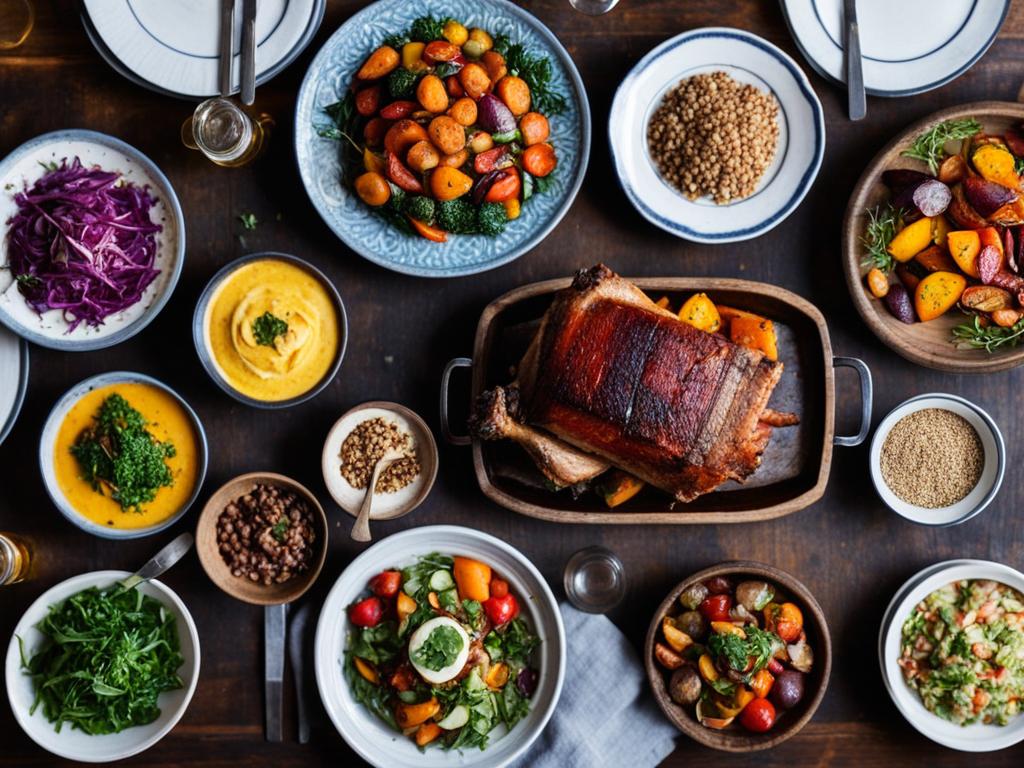
Tasty Side Dishes to Complement Roasted Pork Butt
| Side Dish | Description |
|---|---|
| Macaroni and Cheese | A creamy and cheesy dish that adds richness and indulgence to the meal. The combination of tender pasta and melted cheese complements the flavors of the roasted pork butt perfectly. |
| Coleslaw | A cool and crunchy side dish that provides a refreshing contrast to the tender pork. The tangy dressing and crisp vegetables add a burst of flavor and texture to the meal. |
| Cornbread | A classic Southern side dish that adds a delightful texture and flavor to the meal. The slightly sweet and crumbly cornbread complements the savory flavors of the pork butt beautifully. |
Smoking Pork Butt for Flavorful Results
Smoking pork butt can add a unique and smoky flavor to the meat. To smoke pork butt, you will need a smoker and wood chips of your choice. The slow cooking process of smoking allows the flavors to penetrate the meat, resulting in a tender and flavorful smoked pork butt.
To get started, follow these steps:
- Prepare your smoker by ensuring it is clean and in good working condition.
- Choose the wood chips you prefer for smoking. Popular options include hickory, apple, cherry, or mesquite.
- Soak the wood chips in water for at least 30 minutes to prevent them from burning too quickly.
- Preheat your smoker to a consistent temperature of around 225°F.
- Once the smoker is ready, place the soaked wood chips in the smoker box or directly on the charcoal.
- Carefully place the seasoned pork butt on the smoker rack or directly on the grates.
- Close the smoker and maintain a steady temperature of 225°F throughout the smoking process.
- Smoke the pork butt for several hours until it reaches an internal temperature of 195-205°F.
- Use a digital meat thermometer to check the internal temperature in the thickest part of the meat.
- Once the pork butt reaches the desired temperature, remove it from the smoker and let it rest for about 15 minutes.
Smoked pork butt can be served as is or used in various dishes such as pulled pork sandwiches or tacos. The tender and flavorful meat will be sure to impress your family and friends.
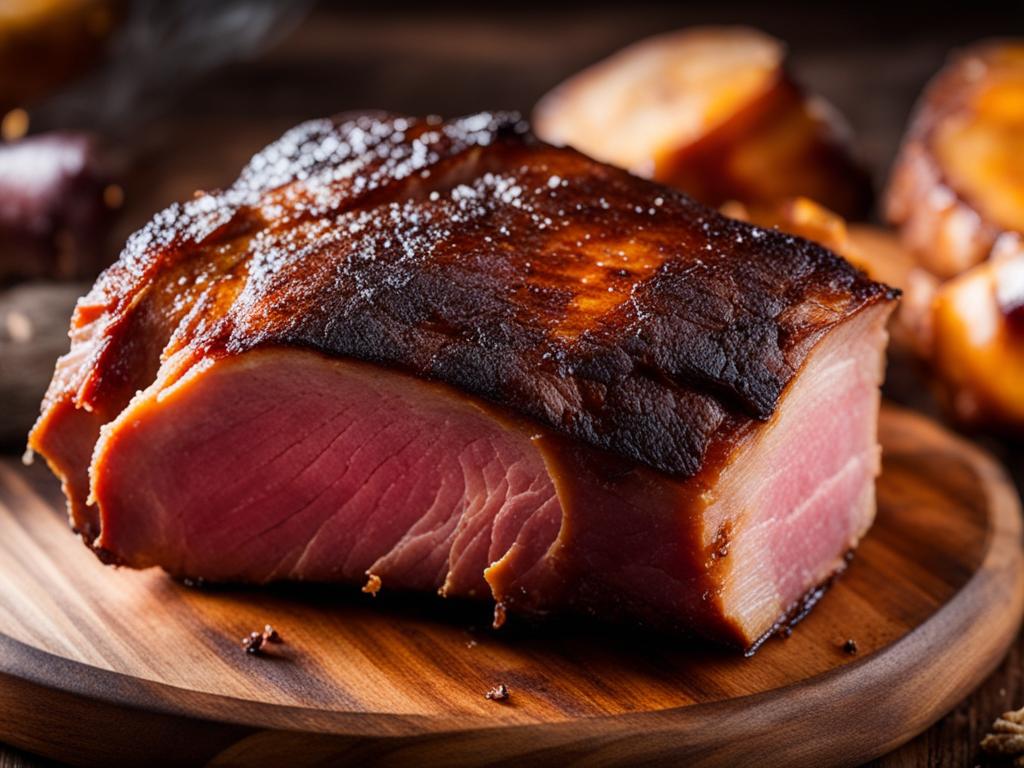
Fast Smoking Pork Butt
If you’re short on time and want to speed up the cooking process, try fast smoking pork butt. By increasing the temperature of your smoker to around 300°F, you can significantly reduce the cooking time while still achieving delicious results.
Start by preparing your pork butt just like you would for traditional smoking. Apply your favorite seasoning rub and let it sit for a while to allow the flavors to penetrate the meat.
Once the smoker reaches the desired temperature, place the seasoned pork butt on the smoker rack and close the lid. Maintain the high temperature throughout the cooking process to ensure fast smoking.
Monitor the internal temperature of the pork butt using a meat thermometer. Cook the pork butt until it reaches an internal temperature of 205°F. This will ensure that the meat is fully cooked and tender, with a melt-in-your-mouth texture.
For even faster cooking, you can consider wrapping the pork butt in foil once it reaches an internal temperature of 165°F. This method helps to speed up the cooking process by trapping the heat and moisture, resulting in a succulent and flavorful pork butt.
After cooking, it’s important to let the meat rest for at least 15 minutes before pulling it apart. This resting time allows the juices to redistribute, resulting in a more tender and juicy pork butt.
Now, you’re ready to pull the fast-smoked pork butt! Use two forks to shred the meat, pulling it apart into bite-sized pieces. The end result will be a deliciously smoky and tender pork that is perfect for sandwiches, tacos, or any other dish you desire.
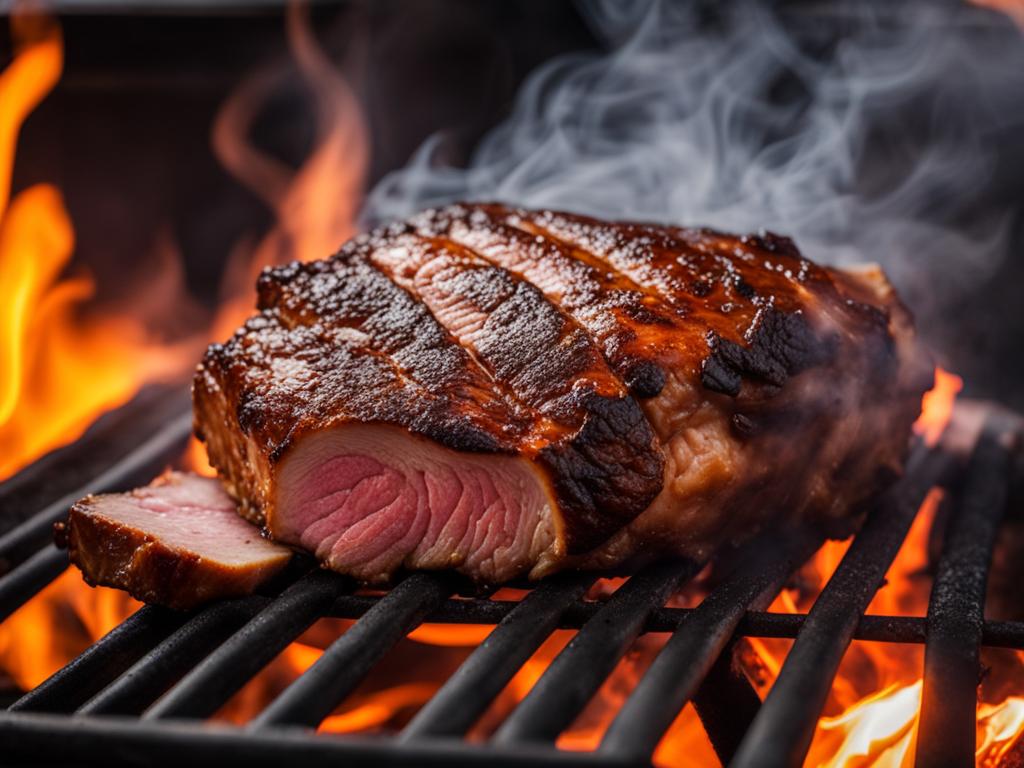
Conclusion
Pork butt, being a versatile cut of meat, offers a world of culinary possibilities. By following these cooking tips and techniques, you can unlock the full potential of pork butt in terms of flavor and tenderness.
Whether you prefer the slow-roasted goodness or the smoky depth of the smoker, the key lies in giving the meat enough time to cook and develop its delicious flavors. It is essential to ensure that the internal temperature reaches the desired level to achieve the perfect tenderness and mouthwatering taste.
Don’t be afraid to experiment with different seasonings and cooking methods to find your signature style for preparing pork butt. Whether it’s a savory rub or a delightful marinade, the flavor possibilities are endless. Remember, the secret to a memorable meal lies in the details.
Also Read : 4 Amazing Pork Recipes To Spice Up Your Life
FAQ
Q: What is the difference between pork butt and pork shoulder?
A: Pork butt and pork shoulder are actually the same cut of meat. The “butt” refers to the thicker, marbled upper part of the shoulder, while the “shoulder” refers to the whole shoulder cut.
Q: How can I smoke a pork butt?
A: To smoke a pork butt, first, season it with your preferred rub or marinade. Then, smoke it low and slow at around 225°F for several hours until the internal temperature of the pork reaches 195-205°F.
Q: What are some delicious pulled pork recipes using pork butt?
A: You can make delicious pulled pork by smoking a pork butt and then shredding the meat. Another option is to cook it in a slow cooker with BBQ sauce for a tender and flavorful result.
Q: Can I use pork butt to make pulled pork in an instant pot?
A: Yes, you can use pork butt to make pulled pork in an instant pot. Simply cook the seasoned pork butt in the instant pot with some liquid (like broth or BBQ sauce) until it’s tender and easily shredded.
Q: What are the best ways to use leftover pulled pork from a pork butt?
A: Leftover pulled pork can be used in various ways, such as in sandwiches, tacos, wraps, salads, casseroles, and even as a pizza topping. It’s a versatile ingredient for many dishes.
Q: How can I make a crispy pork butt in the oven?
A: To make crispy pork butt in the oven, after slow cooking or smoking the pork butt, you can finish it in the oven at a higher temperature to crisp up the outside, giving it a delightful texture.
Q: What is the recommended internal temperature for a smoked pork butt?
A: The recommended internal temperature for a smoked pork butt is between 195-205°F. This ensures that the meat is tender and fully cooked for the best results.
Q: Where does the cut of meat, pork butt, actually come from?
A: Contrary to its name, the cut of meat known as pork butt actually comes from the upper part of the pig’s shoulder. It does not come from the rear of the animal as the name might suggest.
Q: What is the average cooking time per pound of pork butt?
A: The average cooking time for pork butt is around 1.5 to 2 hours per pound when using a low and slow cooking method. However, the cooking time can vary based on factors such as the cooking temperature and desired tenderness.
Q: Can I use bone-in pork butt for making shredded pork?
A: Yes, using bone-in pork butt for making shredded pork can add flavor to the dish. The bone can enhance the richness of the meat and infuse it with additional savory elements during the cooking process.





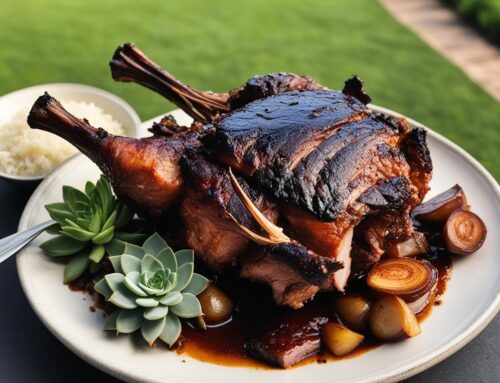
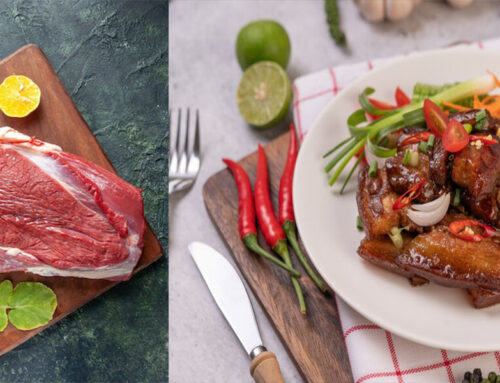
Leave A Comment